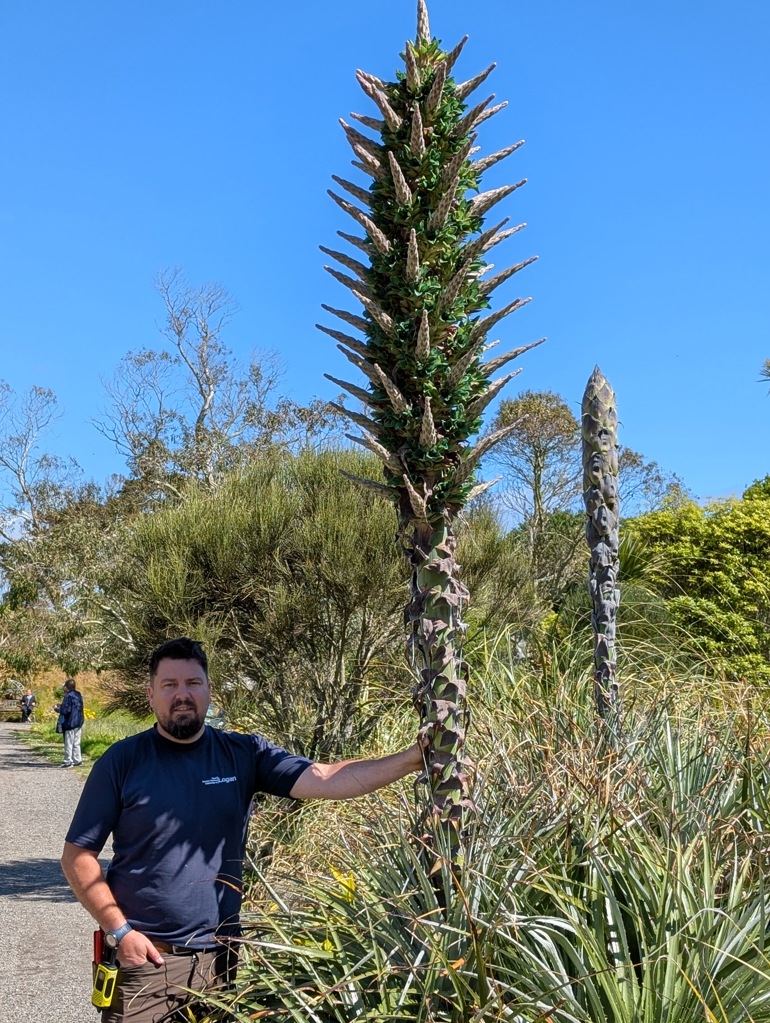Visitors to Logan Botanic Garden in Dumfries & Galloway will be treated to the magnificent flowering of the rare Puya alpestris ssp. zoellneri – but they’ll need to hurry as the incredible blooms usually fade within a week.
The plant, native to Chile, bloomed for the first time at Logan in 2024, making it the first outdoor flowering of the species in Scotland. Then, it reached around four feet high, so experts at the Garden were astounded to find this year that it just kept on growing…and growing – with the flower spikes now reaching a mighty 12 feet high. The plant is already partially in flower, with more buds forming on the alien-like spikes.
Richard Baines, Curator at Logan Botanic Garden said: “I’ve been a horticulturist for over 40 years and the Puya alpestris is truly among the top three most spectacular plants I’ve ever seen in my career.
“Seeing the sapphire tower flower outside its native habitat is a real privilege for us here at Logan and we encourage visitors to come and witness its beauty for themselves over this coming week.
“However, while it’s wonderful to behold, the incredible growth we’re witnessing is likely down to the very warm temperatures we experienced this spring. Unfortunately, this is one of the anticipated consequences of climate change and a warming planet, with higher temperatures allowing plants like these to flourish in Scotland – outdoors – in ways that were never possible before.”

With the common name of sapphire tower plant, the plant is distinguished by its wonderous combination of clusters of turquoise-blue flowers with vivid orange stamens and is located at the entrance to Logan’s Walled Garden. It is part of Logan’s larger Living Collection that has been curated through the Garden’s global conservation efforts and commitment to support internationally significant research and education.
It was donated to Logan Botanic Garden in 2013 by the Royal Botanic Gardens, Kew, as part of an ongoing plant exchange programme that sees both gardens sharing resources to build a positive future for plants, people and the planet.
Visiting Logan
Published: 5 June 2025

